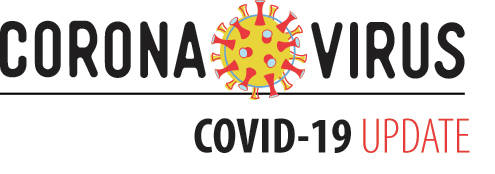
If you have been following the COVID-19 numbers for Highland County, you probably noticed a change in some of the reported numbers. The case definitions and reporting requirements for COVID-19 changed recently, and they changed for a good reason. This week Highland County added its first “probable” case, and I wanted to provide some background on this new way of counting cases. It is also important that we be really clear — this is an imperfect solution to an ongoing problem.
With the ongoing COVID-19 testing limitations, we have had to focus almost exclusively on testing patients who are hospitalized, in long-term care settings or prisons, or people who are health care workers and first responders. This greatly limits our ability to understand the actual spread of this disease in our community, and is a continuing source of frustration for everyone involved.
Here is the real problem: We just don’t have the resources currently to identify the non-hospitalized cases of COVID-19. Many people in our community have shown every classic symptom for COVID-19, but because their symptoms haven’t been serious enough to warrant a hospital visit, they have not been tested. Because they haven’t been tested, they also haven’t been counted.
The solution to this limitation is to expand our case reporting rules and to add two new categories for reporting “probable” COVID-19 cases. This allows our public health system to better understand what is happening with COVID-19 in our community. These two categories are 1.) Clinically identified cases; and 2.) Epidemiologically linked cases.
Clinically, if a doctor sees a patient with symptoms consistent with COVID-19, and other likely explanations are ruled out (rapid flu test is negative, rapid strep test is negative, etc.), the doctor can report that case as a “probable COVID-19” to the Highland County Health Department, which recently held a conference call with area physicians and health care practices to be sure that everyone was reporting these probable cases in the same way.
Epidemiologically linked cases are a little different. For this category, people who become sick after close contact with a lab confirmed case could be considered a case themselves. For example, if we have identified three lab confirmed cases in a long-term care facility, and 10 other residents become ill with the same symptoms, then we can consider those additional cases to be “probable COVID-19.”
Some claim that this expanded definition is an attempt to artificially increase COVID-19 case numbers. In reality, with our ongoing testing limitations, we are currently artificially decreasing our COVID-19 case count. With our focus on very specific cases for testing, we can’t see the forest for the trees.
The addition of “probable” cases is an effort to better capture what is really happening in our communities, but it has some definite limitations. We are going to incorrectly count some cases, and we are going to fail to see others. In the end, however, this is the only way currently available to us to try and see what else is happening in Highland County and Ohio.
Until our testing access improves, we are going to continue to do our best to see and understand what is happening in Highland County. This will become increasingly important as the Stay at Home Order begins to be slowly loosened.
With questions about these new case definitions, contact the health department at [email protected], or 937-393-1941.
Thank you all for your continued support during this pandemic.
Branden Jackman is the public information officer for the Highland County Emergency Operations Center.


